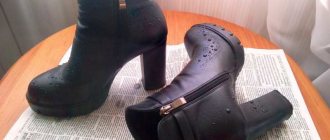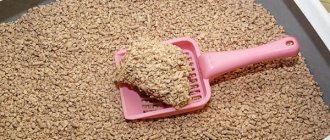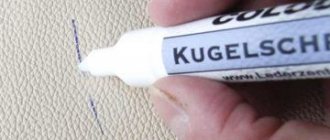For the overall look to be perfect, there should be no defects in the stockings and tights. If a tightening occurs at the most inopportune moment, simple techniques that every woman should know about will help cope with the problem.
We will tell you in this article how to remove a puff on nylon tights.
Manipulations that will help you wear tights longer without snags
- In order to make tights stronger, you should iron the fabric with an iron after purchasing.
- For one day you need to put the tights in the freezer.
- All unsafe objects, such as: car keys, a zipper on clothes, a ring with a stone, the edge of a chair, should be kept away from the tights.
- Pull the product out of the packaging and spray varnish along the entire length.
- If unnecessary threads are visible after purchase, they should be eliminated immediately.
- Nylon products should only be washed by hand with soap.
- A girl needs to put on her jewelry in the form of rings, watches, bracelets only after the tights are on. This will help avoid snags.
- Thin tights should not be worn with skirts or dresses that have a lot of decor.
- You can wear footwear over tights. This way you can avoid puffs.
- This type of product must be worn very carefully, because they do not tolerate sloppiness.
What can't you do?
Since thin women's tights are a very delicate item of clothing, the attitude towards them should be appropriate.
Tightness can appear at any time:
- when putting on;
- while wearing;
- due to improper care, etc.
To prevent a random small clue from turning into a big hole with arrows running down your leg, you should remember the following prohibitions:
You can’t just leave a small clue that appears “unattended” and do nothing.
With a high degree of probability, you can expect that by the end of the working day the snag will turn into a noticeable hole.- If the problem is a simple snag, then careless stitching, especially on the part of the tights visible from under clothing, will not improve the situation, but will only draw attention to the defect.
Super glue
Of course, there is nothing better and faster than superglue. But repairing tights with its help is not always practical. Of course, you can reliably protect the tights from further destruction and, moreover, you can even hide the crease by moving the ends together. But in most cases, no matter how carefully you try to do everything, your hands and fingers may end up in the glue, and the tights will end up simply sticking to your leg. Of course, no one will notice this, but when you get home, taking off such tights will not be entirely pleasant.
Therefore, depending on the situation and where the problem occurred to you, you can choose one of the most suitable options for you. If you wish, you can conduct several experiments at home to be prepared for any situation.
AlinaAuthor of the article
Removing pills from fabrics
Another defect accompanying puffs that forms on the surface of the dress is lint intertwined into a small ball.
Knitted and synthetic fabrics are prone to this phenomenon. The pellets do not affect the strength of the material, but they spoil the beauty of the clothing: it gives the impression that the dress has been worn for a long time. To remove formations from lint, small brushes with a sticky roller inside are made, which are sold in a sewing supply store. The mechanism is simple to use:
lay out the dress on the table;
run the machine from the top of the clothing to the bottom and back;
repeat the procedure until all the pellets disappear.
To remove strands of lint from large knitted items, this method is not needed: the strands are simply cut off with nail scissors. Another source of pellets is pet hair. A mechanical brush will also cope with them, but periodically the mechanism must be cleaned of the fibers accumulated inside. Regular washing will not get rid of puffs and pills.
Special hook
People may call it a tambour needle, a tambour hook, a needle hook, or a Luneville hook. In fact, they are slightly different, but the basics are the same: a wooden (sometimes plastic) handle and a thin rod with a tiny thin hook at the end, with a folding eye (or hooks of the same design, but without a folding part).
Now such things are not as common as they used to be (but they are still on sale), but in the recent past all self-respecting housewives had them without fail.
These hooks will help remove the puff and even raise the arrow if it appears. How does this device work? If you need to remove a loop, then the hook starts from the inside. The puff is grabbed and gently pulled inward.
Next, all that remains is to carefully straighten the place where the hold was (if necessary). Now the loop is inside, and the canvas is smooth again. For completely transparent tights, this option will not work.
If a puff appears and a path has already begun to appear (they also say “the arrow has gone”), grab this loop with your hook and push the hook forward so that it ends up at the next, top, thread (in fact, this is a dropped loop). Grab it and pull it out a little - a new loop will form.
Now grab it and do the same step again. So gradually you will lift all the “runaway” loops. When the last loop is on the hook, pull it inside out as if it were a puff. To prevent the “path” from appearing again, secure the loop with a knot of thin thread.
Important: when you lift the loop, keep the fabric slightly stretched so that it does not tighten after work.
It is most convenient to work with this crochet hook with warm and high-density tights. “Maneuvers” with openwork products will be almost unnoticeable (of course, the result depends on the pattern, type of weaving and dexterity of the hands of the craftswoman herself).
On a note
There are situations when there is no opportunity to do “repairs” immediately after a clue appears. Find an opportunity to carefully examine the loop that appears. If it is small and the likelihood that the “surprise” will not spread until the evening is high, then leave the solution to the problem until you return home (now you know how to remove a puff on tights and you will cope with the task without difficulty).
If a treacherous arrow has already begun to creep in place of the elongated loop, use the correct, proven option: fix it with colorless varnish. This option, of course, is not the best, but it will protect you from a terrible path along your entire leg or even protect you from the appearance of a hole.
What to do with claw holes
Cute pets are not good at understanding brands and valuable things. They leave clues wherever their “velvet” paws can reach: curtains, down jackets, outerwear, etc. How to be in this case?
- Do not try to test the strength of a thing by stretching it in different directions, as when removing small puffs
- Carefully remove the curtain from the curtain rod and the clothes from the hanger, wrap them with the damaged part inward to avoid further injury
- Take it to a repair shop
We constantly have to deal with the consequences of sharp claws, snags from rhinestones, and tightening from “sharp” fittings. The Mobile Tailor experts are guaranteed to help
Tights occur on clothing due to the fact that one or more threads are “pulled” outward in the form of a loop. Do not rush to throw away the item; it is better to try to get rid of the defect, because in most cases it can be eliminated.
Silk, satin, nylon fabrics
- They do not have the elasticity described above. In addition, the weaving is very small, the threads are difficult not only to distribute, but even to see individually. However, it is also possible to get rid of the “hook”. To begin, use a needle with a thin thread threaded through it.
- Where the puff formed, a small hole also formed. Pass a needle and thread through it from the wrong side to the front side. Use it to grab the head of the extended loop, then through the same hole return the needle to the wrong side. The deformed loop will end up inside the product.
- Pull the fabric on both sides of the deformation area. If necessary, apply force, act with an energetic jerk. The loop will partially dissolve. But most likely, not completely (that’s why it was necessary to direct it inside the product to hide it from view). Finally, smooth the tightening area with a hot iron through damp gauze. This way you will disguise the “traces of the incident” and achieve the desired result.
The school year has just begun, and the new school trousers or skirt are already showing strings. This happens very often. It seems that a simple solution would be to simply cut off the “trouble,” but then a hole will appear in the place of the nuisance, and maybe even an arrow will appear. So what to do if you have a puff in your clothes? The tightening problem can be fixed in just a few simple steps:
1) Gently straighten the fabric from the sides towards the tightening
2) You need to insert a needle with a large eye (large eye for convenience) into the center and lower it so that only the eye remains on the surface and pull the tail of the puff into it.
3) Pull the tie to the wrong side of the product.
You should also not cut off the tail from the inside, as this can lead to the appearance of holes or arrows on the clothing. Thus, you no longer have to worry and think about how to remove puffs on clothes at home, just use this quick method and the “new thing” will be ready.
As a result, after the work carried out, we receive school trousers without traces of puffs!
Tights in clothes are an unpleasant but common phenomenon. The pussy greeted its owner too happily, there was a chip on the chair in the office, an earring caught on the collar - you never know the situations when a new dress ends up with a small snag that can seriously ruin the appearance. What to do? The main thing is not to panic, and now we’ll talk about how to remove strings on a dress.
Which tights don't pill?
Pills on tights appear due to friction against the skin or other items of clothing. This is the first sign of wear on the fabric. But it happens that they appear after the first wear. This may be a consequence of poor quality material or errors made during washing.
The reasons for the appearance of pellets depending on the material:
- Synthetic fabrics with a loose, heterogeneous structure. Due to poor twisting of the threads during wear, they stretch, which leads to the formation of pills.
- Knitwear. The appearance of pilling on this type of fabric depends on the type of fiber (mixed, synthetic, wool, cotton) and on its processing.
Pills are not noticeable or do not appear at all on synthetic tights or with 70–80% cotton content.
Recommendations
The following recommendations will help in the fight against tights
You should only purchase tights that are the right size. You can check the size chart on the product packaging.- High-quality tights last longer and are less likely to form puffs.
- Composition matters.
The elastane (lycra) in the composition is responsible for elasticity and resistance to deformation. For tights with a density of up to 100 den, the optimal elastane content is from 10%. For denser ones this figure is usually lower. - The thinner the tights, the higher the likelihood of puffs. Therefore, they should be worn very carefully.
- If the tightening is noticeable and cannot be eliminated using simple methods, the tights will need to be replaced.
- Before first use, new tights, especially if they are not of very high quality, can be sprayed with hairspray.
On dark thin tights, the puffs are much more noticeable than on the same, but flesh-colored ones.
Methods for solving the problem
The approach to eliminating the defect is influenced by the following factors:
- in what area is the lead located?
- is there access to available materials;
- product density;
- type of tightening;
- presence/absence of decor on the model, etc.
At home, fixing a defect is much easier and more convenient than at work or in another public place. Some puffs can be removed even without the use of additional tools.
Stretching
You should start by inspecting the problem area . If the tie is transverse and the thread itself is not torn, then by carefully pulling the material near the tie to the sides, the problem can be eliminated.
But if the thread not only tightens, but also breaks, this method will not work, since the arrow may run when the material is stretched. And the problem will turn from a minor one into a big one.
To sew or not to sew?
In cases where the snag or small hole is in an inconspicuous area, for example, hidden by shoes, it can simply be sewn up. To do this, use a very thin needle and thin threads that match the color of the product.
But if the affected area is located in a visible place, stitching will only help to avoid arrows . Such a repair will not always be appropriate - only as a temporary option.
Nail polish
When a snag appears, it is very important to prevent arrows and holes from appearing. To do this, you can use clear nail polish.
Procedure:
- You need to drip a little varnish onto the edge of the tie, which threatens to creep away and turn into a hole.
- Wait for the varnish to dry.
Even if the arrow has already started, the varnish will prevent its spread. But such a solution will not give long-term results, so it is only suitable as a temporary solution. You should use regular polish, not gel polish, which does not dry in air.
Crochet work
If the tightening is not the only problem, but the arrow has already begun to spread out, you can solve the problem using a hook , but you will need a special tool for this purpose. It is thin and has a movable folding part on the working side.
Any tights and stockings are, in essence, knitted fabric. The task is to catch the “running” loop and restore the appearance of the tights.
This option is suitable for fairly dense models, but it is almost impossible to do it on tights of 20 den or thinner.
To restore the weave, you need to pick up the bottom loop on the arrow, catching it with a hook, and lift it to the next weave. At each stage, as you progress, you need to make a new loop. A special folding “tongue” of the hook helps with this.
Where are the puffs?
A snag can appear on any material. But if cotton and linen clothes can be simply ironed well, then with thin, delicate materials you will have to tinker a little. A small puff on a dress can be removed in a few minutes, but some actions are contraindicated:
- Do not pull the fabric too much in different directions.
- There is no need to try to use scissors, unless we are talking about pills on knitwear.
- Don’t think that you can deal with puffs and pills with regular washing.
Most often, tightening occurs:
- on knitwear;
- on synthetic materials;
- on chiffon;
- on woolen knitted products;
- on silk and satin.
Preventing snags
To prevent tights from tearing and constantly getting tight, it is recommended to follow measures to prevent such a defect.
A treacherous tightening can occur not only while wearing tights and stockings, but even while putting them on. Correct donning is the first stage , which should take into account the following points:
- before putting on tights, you must remove rings, bracelets and watches;
- you should put on the stocking after gathering it into an accordion with your hands;
- do not use force;
- do not hurry;
- put on without jerking;
- monitor the condition of your fingernails and toenails, which can also leave snags.
Shoes should not cling to tights. Most often, such a nuisance occurs when wearing boots.
Having determined the place that leads to tightening, it is necessary to eliminate the defect - file the rough area with a nail file and coat it with colorless nail polish. If the defect cannot be removed on your own, you can contact a shoe repair shop.
Wash thin tights only by hand , separately from other items. In this case, intense impact should not be allowed - friction, twisting, use of brushes, etc.
A separate danger to the safety of stockings and tights is posed by uneven surfaces that can lead to snags - benches, old wooden chairs, etc. Also, tights “don’t like” to rub against bags, packages and decorative elements of clothing.
Careful wearing and proper care of tights should also not be discounted. This article will tell you how to wash nylon and knitted tights.
How to remove creases on tights
How to sew up a crease in tights: first, you should grab the lowest loop and bring a new one out of it from the dropped one (if you knit or crochet, you will immediately understand how to pick up the dropped loops), without tightening the elongated loops too much, so that they are almost the same the same size as the others. In this way, you should knit all the dropped loops, and secure the last one with a neat knot on the wrong side. Tights are also a knitted product, which means that the fabric is machine knitted in the same way as hand knitting.
Decorating a hole in tights . An arrow or a hole can be hidden by sewing it up (so as not to go further) and sewing on top of some decor in the form of embroidery, stripes, beads or rhinestones. You can fantasize here as much as you want, making a piece of clothing individual, perhaps even shocking and, of course, ultra fashionable.
You can fix an arrow or a hole in the tights for a while so that it does not increase in size and go further with simple hard toilet soap (wet it slightly beforehand) or nail polish (preferably in the color of the tights or transparent). It is quite simple to secure the arrow using such folk methods: you just need to treat the problematic edges with the means described above. After applying the product, you need to wait a couple of minutes for it to dry, preferably without moving, so that the knitted fabric does not deform during this process.
It matters what kind of tights you buy
Choose tight tights that do not show any skin through. If it is not possible to assess the density of the fabric visually, check the information on the packaging. First of all, you should be interested in the number of deniers - DEN. It is this indicator that is directly related to density. The higher the density, the less likely the appearance of puffs and arrows.
You don't have to buy Wolford tights (which are the same price as it would cost two people), there are plenty of smaller name brands that offer good quality tights. You can buy noname tights in 100 or even 200 denier and find that they are quite durable.
Kinds
How to remove a puff on tights? Here you need to know what type of product you are dealing with. There are several types of tights:
- Thermal tights. They are made from several types of fibers (a mixture of synthetics, wool, elastin, cashmere, etc.).
- Therapeutic (a special type of tights with antiseptic impregnation, intended for women with varicose veins).
- Openwork, decorative (with a pattern, mesh).
- Knitted (similar to knitted, made from wool, half-woolen, cotton threads).
- Elastic (nylon).
It is not possible to remove the puff from all types of tights. The easiest way to do this is on knitted, warm, therapeutic, decorative, and openwork models. The most difficult thing to deal with are elastic transparent tights. The lower the density, the more difficult the task.
If your tights are from 5 to 40 den, you will have to abandon the idea, or resort to radical measures (read below), since, alas, it will not be possible to completely restore the fabric. But the 50 den models still have a chance to “live” for some time.
You can also “conjure” tights with weaves (with mesh, openwork knitting). This is the so-called fantasy option. If you try a little, it can be restored. Let's consider the available methods.
Cat and dog hair pellets
Pets, even without meaning to, sometimes bring a lot of trouble to their owners. For example, cat and dog hair gets on clothes, falls off, and forms pellets. But this is not a problem that you should worry too much about - animal hair pellets are removed quite easily. The main thing is to do it in a timely manner.
If the wool is already stuck, a special roller with an adhesive surface will help you out. Just run the roller over your clothes (as well as the carpet or sofa seat) and all the hair stuck to the fabric will be on it.
You can make such a roller yourself. To do this you will need: Wrap the bottle with tape so that the adhesive side is on the outside.
Remove puff in two minutes
How to remove a puff on chiffon, silk or satin? There is one very simple way that allows you to remove a small snag in a few minutes. You need:
- thin needle;
- iron with steamer.
Your main task is not so much to remove the puff, but to make it invisible. For this you need a thin needle, preferably with a wide eye - so that the puff can pass through it freely:
- Straighten the fabric.
- Insert the needle from the front side next to the puff so that the entire needle, except the eye, is on the wrong side.
- Insert the tightening thread into the eyelet.
- Pull the hook to the wrong side.
- Gently pull the fabric in different directions.
- Steam the hook area.











